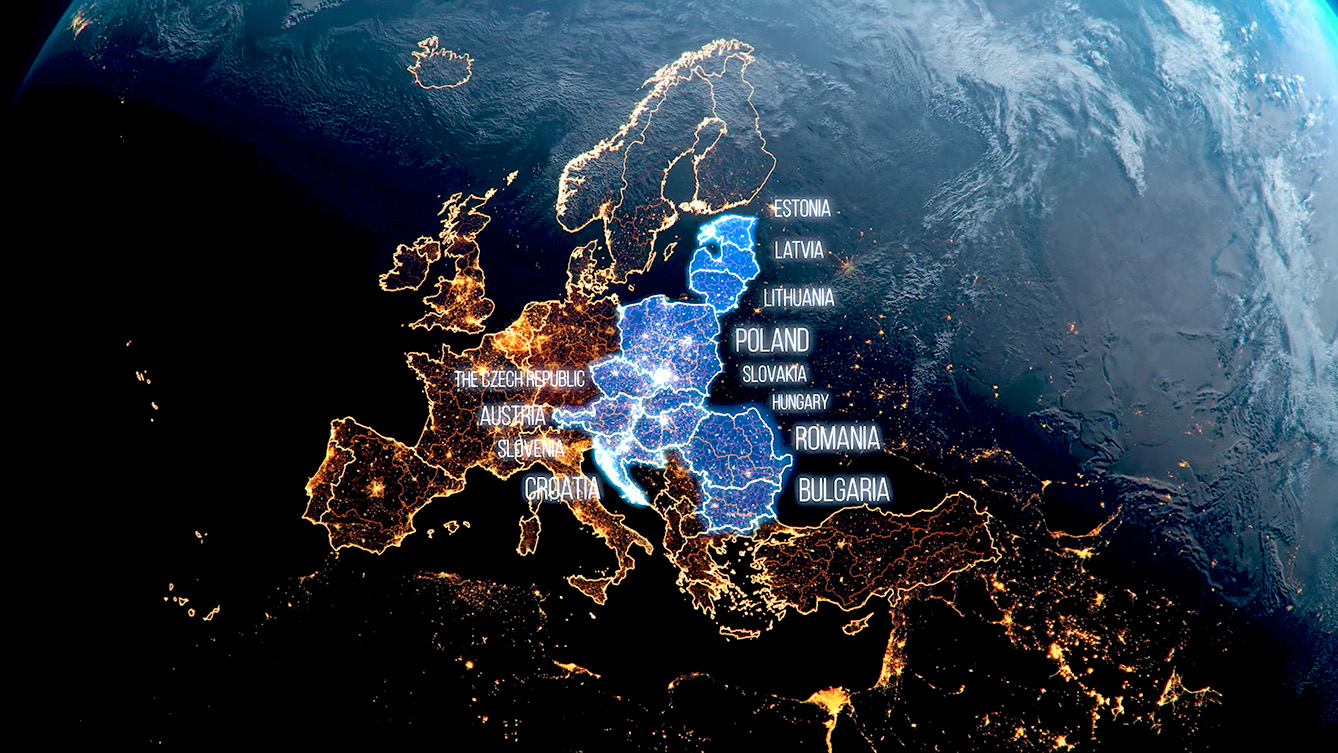The two driving forces behind the first summit in Dubrovnik, Poland’s President Andrzej Duda and Croatian President Kolinda Grabar-Kitarović, were inspired by an Atlantic Council report titled “Completing Europe: From the North-South Corridor to Energy, Transportation, and Telecommunications Union.”
The Three Seas: Central and Eastern Europe
The report identified an infrastructural gap in the EU, a repercussion of the nearly five decades that the Iron Curtain divided Europe into two opposing ideological camps with different geopolitical alignment and economic systems. The two presidents were determined to do something about the lack of infrastructure along a north-south axis in Central Eastern Europe.
They quickly managed to convince fellow heads of state from the region that it was time to better coordinate cooperation within the spheres of the energy, transportation, digital communication, and economic sectors. This is how the Three Seas Initiative was born.
The Dubrovnik Statement, signed by all 12 states after the first summit, emphasized that the cooperation would take place within the framework of the European Union and across the broader transatlantic space, opening the door for US involvement in the project. At the 3rd annual Three Seas Initiative summit in 2018 in Bucharest, Germany became a close partner of the Initiative and received observer status.
Increased interconnectivity
The joint statement signed after the summit also expressed that the 3SI could be used to further substantiate EU policies directed to the Western Balkans and the Eastern Partnership countries, including through the effort of bringing these regions closer to the EU through increased interconnectivity. Since its inception, the economic component has been at the forefront of the 3SI. It has been identified that greater connectivity in itself will foster economic growth.
The IMF report “Infrastructure in Central, Eastern, and Southeastern Europe: Benchmarking, Macroeconomic Impact, and Policy Issues” concluded that every Euro spent on infrastructure in the region will, in the long run, return between EUR 1.70 to 2.50. However, within the 3SI, other steps have been taken to encourage increased regional economic cooperation. Every 3SI summit is accompanied by a business forum, gathering hundreds of representatives of the region’s largest companies to facilitate intraregional business deals.
A 3SI Network of Chambers of Commerce has been set up to facilitate increased economic cooperation. The process is aided by the Three Seas Initiative Investment Fund, which aims to raise USD 3 to 5 bln in funds. Initially, it was mainly supported by the region’s state development banks but is increasingly focused on private investors. The 3SI’s overarching goal is to spread prosperity to the region’s residents.
The economies of Central Eastern Europe have, on average, grown much more swiftly than their counterparts in Western Europe following the fall of communism. To maintain this trajectory, the region must continue to find new opportunities appearing in the international market. Better infrastructure and closer business relations within the 3SI will be crucial going forward.
Intangible benefits
Some of the advantages offered by the the Three Seas Initiative are less obvious than the purely economic effects. The 3SI will, for example, contribute to increasing the safety of the region’s residents through the energy security that the North-South Gas Corridor will create. The improved infrastructure, particularly within transport, will make it easier for people to move around within the region, creating new relationships between neighbors. The increased cross-cultural understanding is likely to improve relations also on a state level.
Finally, many of the Three Seas projects have a green character. For example, new gas pipelines will make it possible for many residents to heat their homes with gas instead of coal, decreasing air pollution. Other projects are concerned with measuring pollution in the region’s rivers or introducing green technologies such as wind or solar power.
The 3SI was created in 2016 to improve the lives of people living in nations that have only been sovereign for 30 years. It is safe to assume that the 3SI’s mission must also be long-term and continue advancing the region’s development for many years to come.







